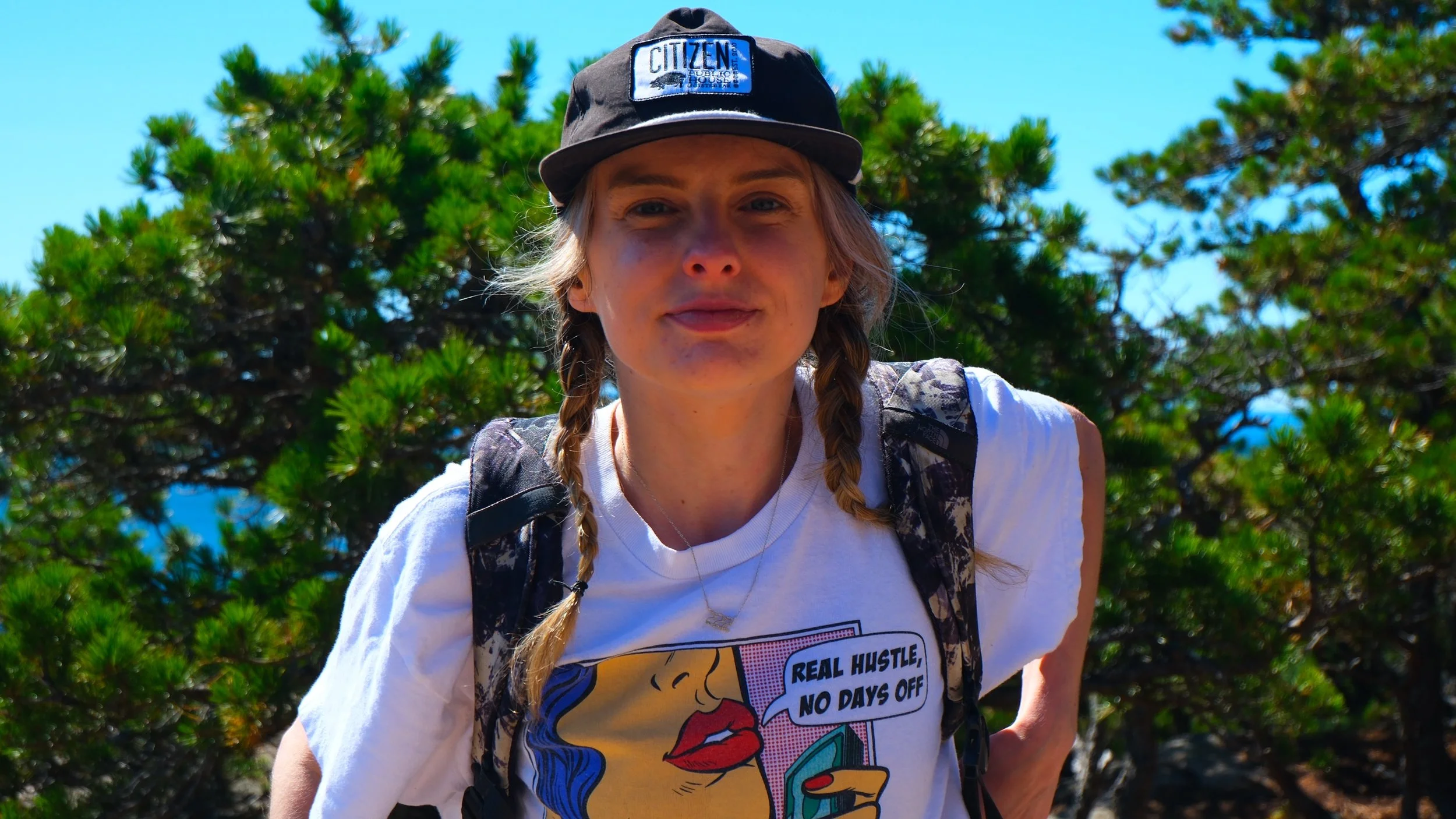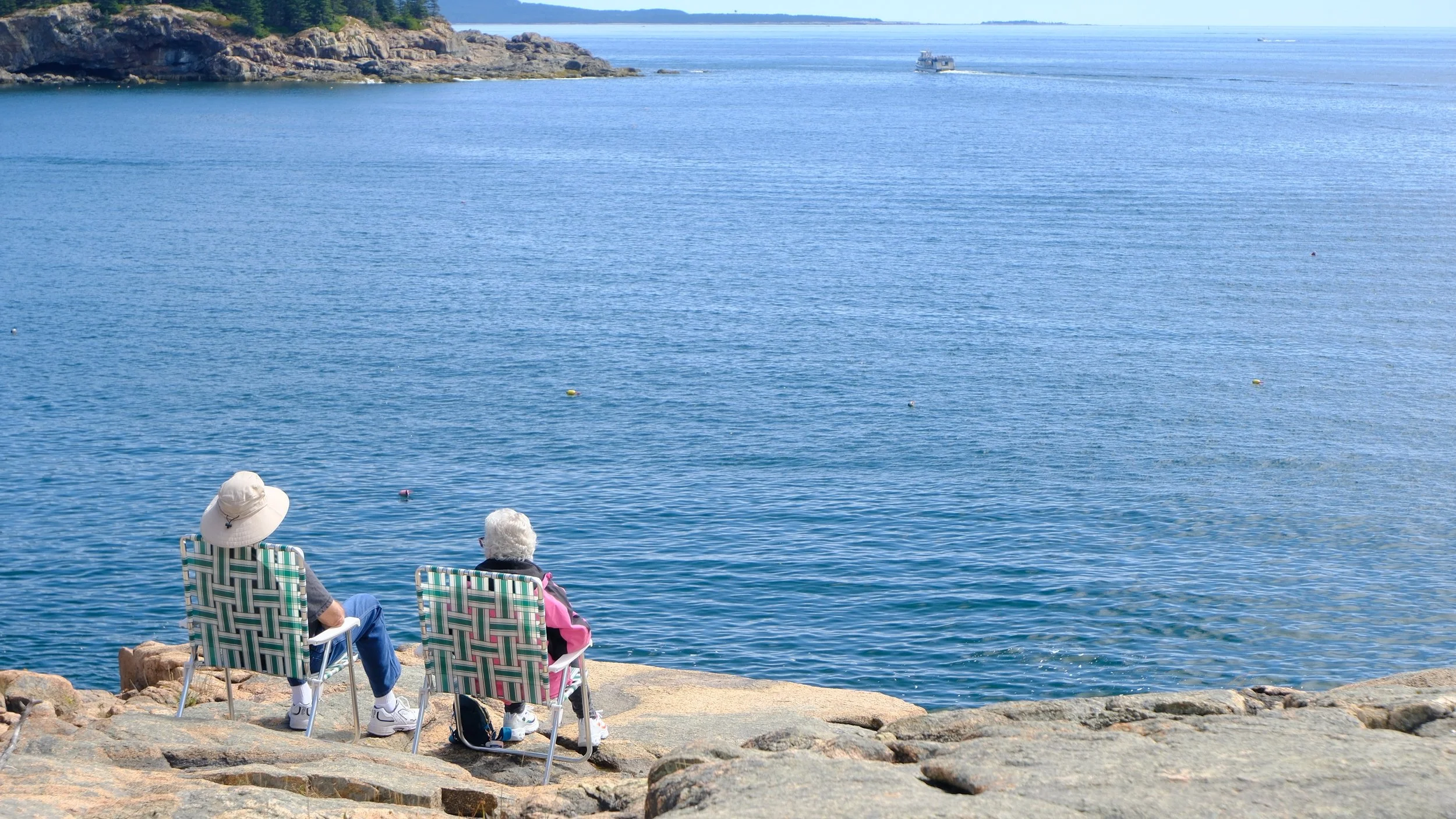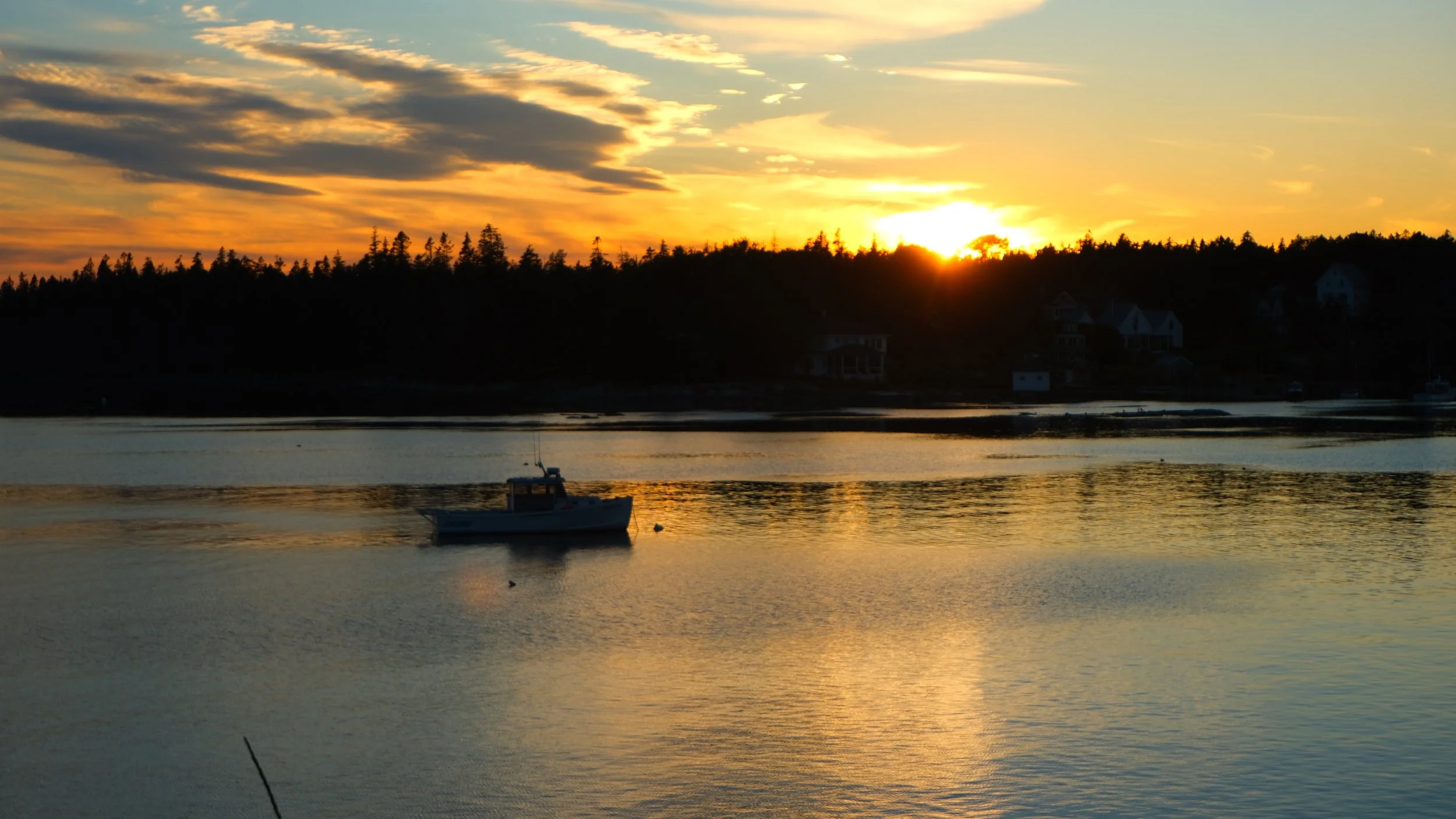Signs, Stewardship, and the Soul of Acadia.
Walking through Acadia, what stays with me isn’t just the cliffs or the sweep of the ocean, it’s the details that have become so ordinary we forget to notice them. The deep green wooden signs with their yellow or white letters, pointing the way to Cadillac Mountain or Seawall Campground, feel like they’ve been here forever. The tall, plain lettering looks so natural against the pines that you assume it must have always been this way.
caitlin atop the beehive trail
But those signs have a history. In the early days of the park system, especially in the 1920s and 30s, signs were usually hand-painted or stenciled by CCC crews — the Civilian Conservation Corps. The CCC was a New Deal program during the Great Depression, putting unemployed young men to work on public projects. They built trails, planted trees, carved stone bridges, and yes, made the signs. And while I’ve got my qualms with the New Deal, some of it was out of necessity — when you’ve got millions out of work and whole landscapes in need of care, you don’t argue too hard about the job getting done. Their lettering style wasn’t an official font, just a hand-drawn block gothic — squared-off, legible sans-serif letters carved into painted boards. Functional, a little rustic, and very much the product of human hands.
By the 1950s and 60s, as postwar America took to the highways in record numbers, the parks adopted a new standard. The Federal Highway Administration had introduced Highway Gothic, the typeface of American road signs. To keep things consistent, parks began using it too: tall, thin white or yellow letters on reflective green backgrounds. It’s the same style you see on interstates, but in the parks it took on a different character. Paired with forest-green boards and natural settings, it became so tied to trailheads, campgrounds, and overlooks that it feels timeless. Generations of visitors grew up with it burned into their memory.
That’s the nostalgia these signs carry. They were designed for clarity, not fashion, and that’s why they still feel right decades later. You can stand at a trailhead today and know you’re looking at the same design your grandparents saw on their first road trip north. It’s continuity in wood and paint.
Brands picked up on it. L.L.Bean, just up the coast in Freeport, built its identity on the same tones: green canvas packs, tan boots, a simple logo that could easily pass for park signage. They even sell a National Park Collection, leaning on that shared memory. Patagonia too, though from the West Coast, trades in the same heritage with retro graphics and public land advocacy campaigns styled like old park posters. Companies realized that if you could borrow the park aesthetic, you weren’t just selling gear — you were selling permanence, trust, and tradition.
Of course, the land itself carries a longer story. For more than 10,000 years, this was home to the Wabanaki people — Penobscot, Passamaquoddy, Mi’kmaq, Maliseet, Abenaki. They fished these waters, harvested berries, and held sunrise ceremonies on Cadillac Mountain. Even after being pushed onto reservations, Wabanaki families returned each summer. In the late 1800s, as Bar Harbor swelled with tourists, they set up seasonal encampments along the shore, selling baskets and guiding visitors. At its peak, hundreds camped here every year. Over time, those encampments were pushed aside by the pressures of resort culture.
And I’ll admit: I didn’t know any of this before coming here. I thought I understood Acadia as just a park, but learning about the Wabanaki opened it up as something layered, human, and much older than the trail maps and signs ever suggested.
We don’t need to call everything colonialism to acknowledge that history, but we should be honest: we weren’t the first stewards of this land. The Wabanaki presence continues — in both ceremonies & in partnerships with the park. Recognizing that doesn’t diminish Acadia’s beauty; it deepens it.
And then there are the analog constants that remind us why places like this endure. In Acadia, you can still turn the dial to 1610 AM and hear a crackling park broadcast, or switch on a NOAA weather radio to catch a familiar monotone voice listing fog advisories and wind speeds. Fishermen still plan their mornings by it, hikers in remote corners still carry it when cell service drops out. It hasn’t changed because it doesn’t need to. There’s comfort in the continuity — the idea that a camper in 2025 is leaning over a radio in Seawall Campground the same way someone did in 1965.
All of these layers — the CCC’s hand-painted signs, the Highway Gothic era, the Wabanaki history, the radio voices on the wind — remind us that Acadia is more than a scenic backdrop. It’s a place where America’s constants still hold. We weren’t the only ones to care for this land, and now it’s our responsibility to keep caring for it. We don’t need to be tree-huggers to admit that, and we don’t need to rewrite every sentence of history to respect it. It comes down to this: some things in America are worth preserving. The signs, the land, the traditions — steady, timeless, and ours to keep.



